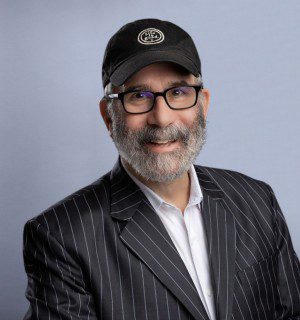News and Insights
It’s Time to Face the Music. Fear Is Driving Up Healthcare Costs
February 11, 2020
Non-communicable diseases (NCD) such as cancers, diabetes, heart and chronic lung diseases, account for 40 million (70%) of the world’s 56 million annual deaths. Practically half of the people who die from these often-treatable illnesses are under 70 years of age. While some lack access to care, is that the primary reason so many are treated when they are seriously ill? The answer isn’t necessarily drug costs, hidden hospital charges, poor medical care or access challenges – the go-to villains in this current policy climate. Often, the biggest illness to overcome is our fear: fear of embarrassment and overcoming social disparities, stigma and what the physician might find. Fear is the equal-opportunity culprit that may most likely delay diagnosis and prevent early intervention.
There are countless studies that show a link between fear of illness and avoiding care, especially as people approach middle age, with one recent UK study showing that as many as a third of people have avoided a doctor’s visit they deemed necessary. Perhaps ignorance is bliss, but can we afford evasive behaviors – avoidance – when it comes to wellness and wellbeing? The data show that we need to reorient to one of the biggest challenges – overcoming the neglect driven by “fear of finding out,” because it is costing us trillions.
According to a study in the American Diabetes Association journal Diabetes Care, the economic burden associated with diagnosed diabetes, undiagnosed diabetes and prediabetes, and gestational diabetes mellitus topped $400 billion three years ago. While those with diabetes require active treatment, $43.4 billion was associated with prediabetes. For the 84 million US adults with prediabetes, the annual economic burden is $500 per person, according to “The Economic Burden of Elevated Blood Glucose Levels in 2017: Diagnosed and Undiagnosed Diabetes, Gestational Diabetes, and Prediabetes.”
When we look at health care costs, the bullseye seems to be drug costs. But Merck CEO Ken Frazier in answering a question at the Forbes Healthcare Summit about cancer drug costs hit on a target we need to address beforehand:
“The most important thing for us to have a holistic view of value is to have a holistic view of cost, because when you look at the cost of the natural disease, it’s actually cancer we can’t afford.”
Independent data seems to back up Frazier’s approach. The estimated cost-savings from earlier cancer diagnosis and intervention – breast, lung, prostate and colorectal cancers and melanoma, which account for more than 50 percent of the newly diagnosed US cancer patients – reaches the billions.
Here we find a bigger challenge. By seeking to find convenient villains, we miss the bigger picture. Our primary preventive care system is unraveling into convenient pop-in clinics at pharmacies and mega stores to address quick symptomatic issues. It’s likely at point-of-purchase health locations that we treat without time to explore or follow-up on underlying causes of illness. These new centers of “urgent care” provide what the market demands – service and immediacy, but time will tell whether this new path to access translates into better preventive care.
What would happen if early, regular screenings were part of a national health policy of reducing late-stage (and expensive) disease diagnosis? The earlier intervention this would enable would save more lives and drive down costs, and we wouldn’t need to turn to more expensive therapies except as last resorts. More importantly, when people see these unusual physical signs and symptoms – lumps, bumps, soreness, faintness, persistent sniffles – we need consumers to make an appointment with their health professional and secure the emotional support necessary to pursue an answer. Tacitly encouraging a generation to be the ostrich with its head in the sand is not a preventive disease policy we can afford.
Along with their studies in chemistry, biology, physiology and medicine, healthcare professionals require training in providing consumer emotional support. Providers and their office staff need continuing medical education in the psychology of care, and they should receive the reimbursement support necessary to make time and investment in patients’ mindsets a central focus of primary prevention. Along with patients’ friends and family who have faced similar health concerns, health professionals on the frontlines of care must break the deadly cycle of “avoidance.”
There are physicians who are amazing at communicating with patients in difficult circumstances. These medical heroes are top-flight clinicians who rely on their medical knowledge as a foundation for next steps. However, what makes them great is how they connect with their “patient customers” as partners in the care process. These healers should be the standard for others to emulate. By lowering emotional and fear barriers, we will find the greatest solution to reducing medical costs and increasing survival may be encouraging people to engage in own self-care.
Somehow, we must face the biggest burden in human life and cost – our fear of a diagnostic label. Nelson Mandela offered counsel to our health ecosystem partners – patient advocates, payers, product innovators, policymakers and providers – who are all dedicated to improving and sustaining people’s lives:
“Courage is not the absence of fear, but the triumph over it. The brave person is not one who does not feel afraid, but who conquers that fear.”
